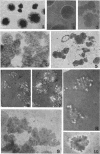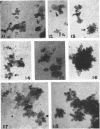Abstract
Bandur, Bojana M. (Massachusetts General Hospital, Boston) and Louis Dienes. L forms isolated from a strain of Serratia. J. Bacteriol. 86:829–836. 1963.—In an L culture isolated from a strain of Serratia, two types of colonies developed, one (S-1) similar to the usual L colonies with the centers embedded in the agar and the other (S-2) similar in gross appearance to the usual bacterial colonies. The S-2 colonies consisted almost exclusively of large bodies and were produced by the direct multiplication of the large bodies. This occurred by enlargement, deformation, and segmentation. The organisms in the two types of L colonies were equivalent, and the type of growth was determined by environmental influences. The high viability of the cultures and the relative lack of autolysis permitted the study of the reproductive processes and the resulting growth under varying conditions. The basic reproductive process, as in other L forms and pleuropneumonia-like organisms, seemed to be the multiplication of small granules, either free or in small or large aggregates enclosed in a common envelope. It was possible to observe clearly the growth of small granules from the large bodies.
Full text
PDF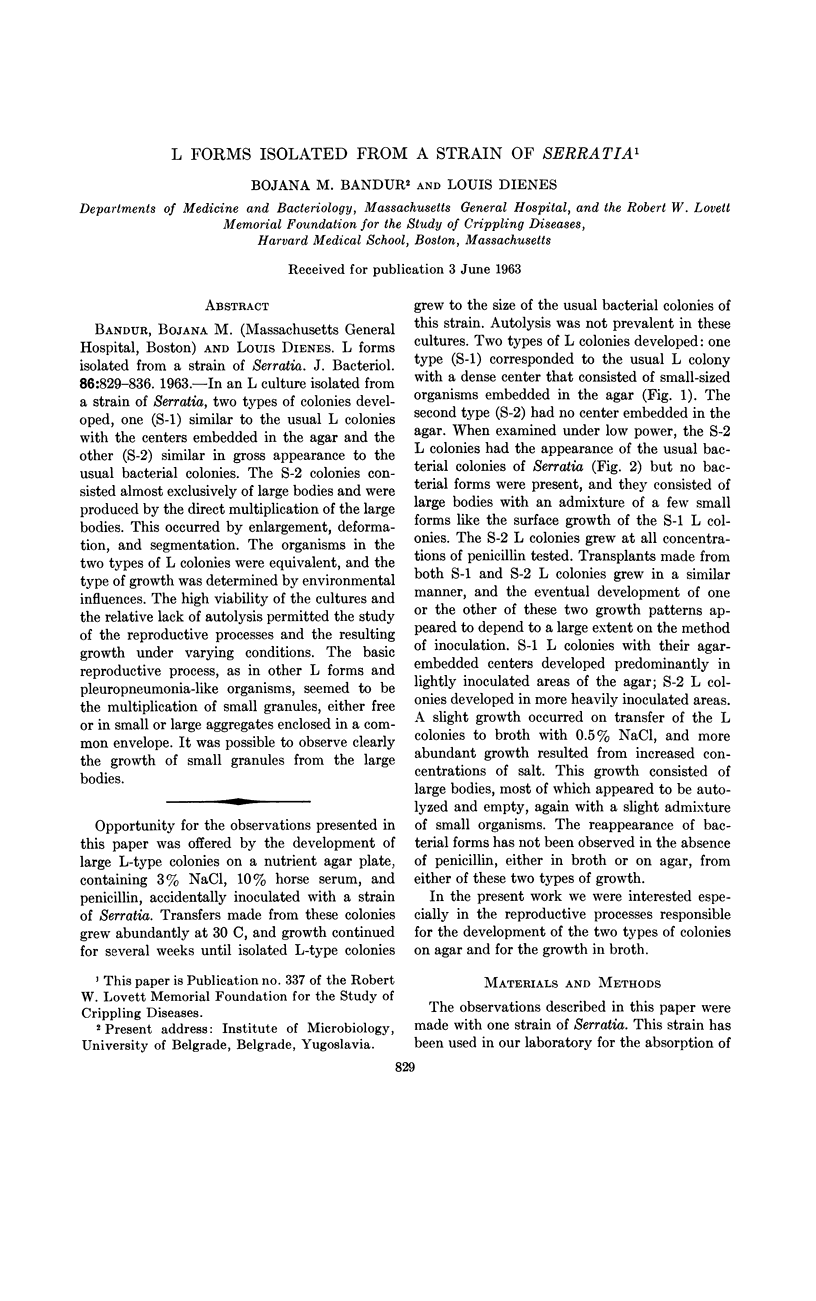
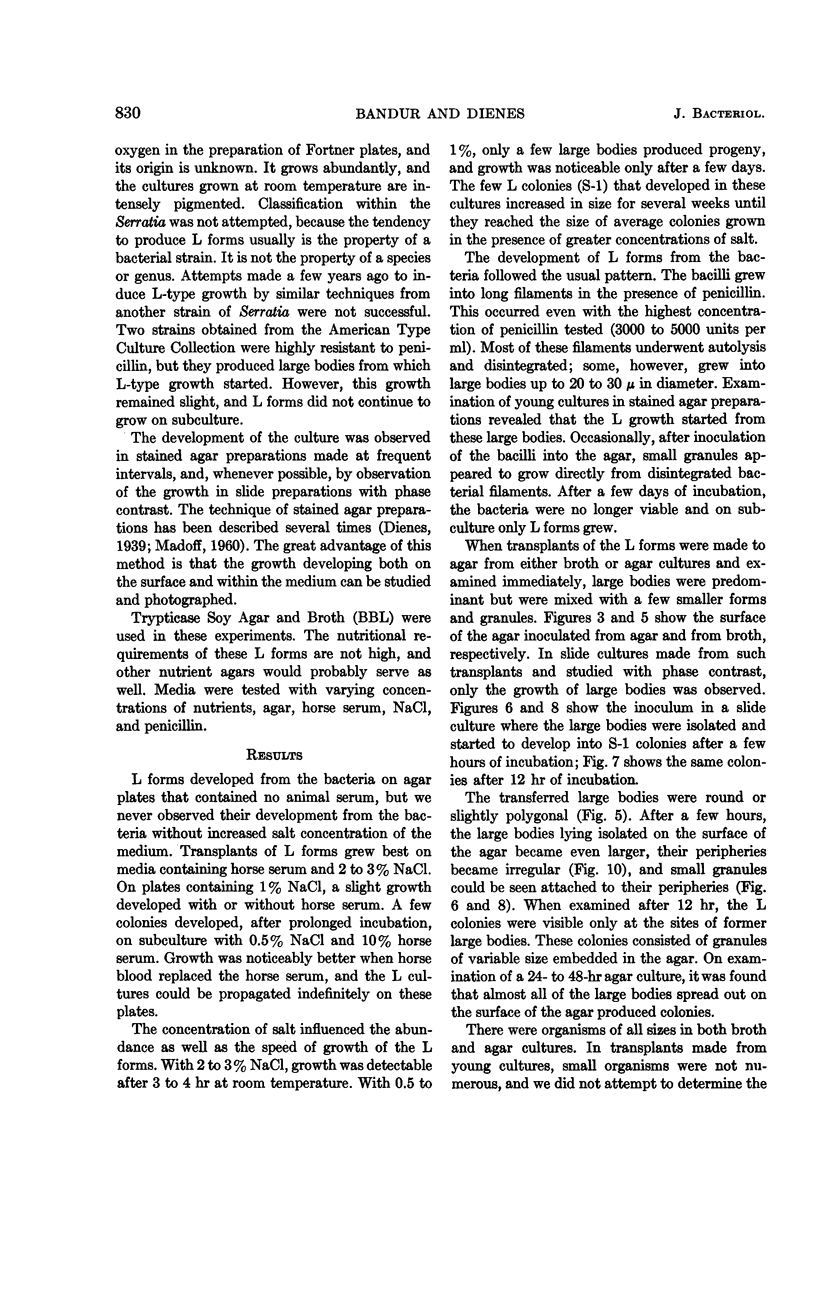
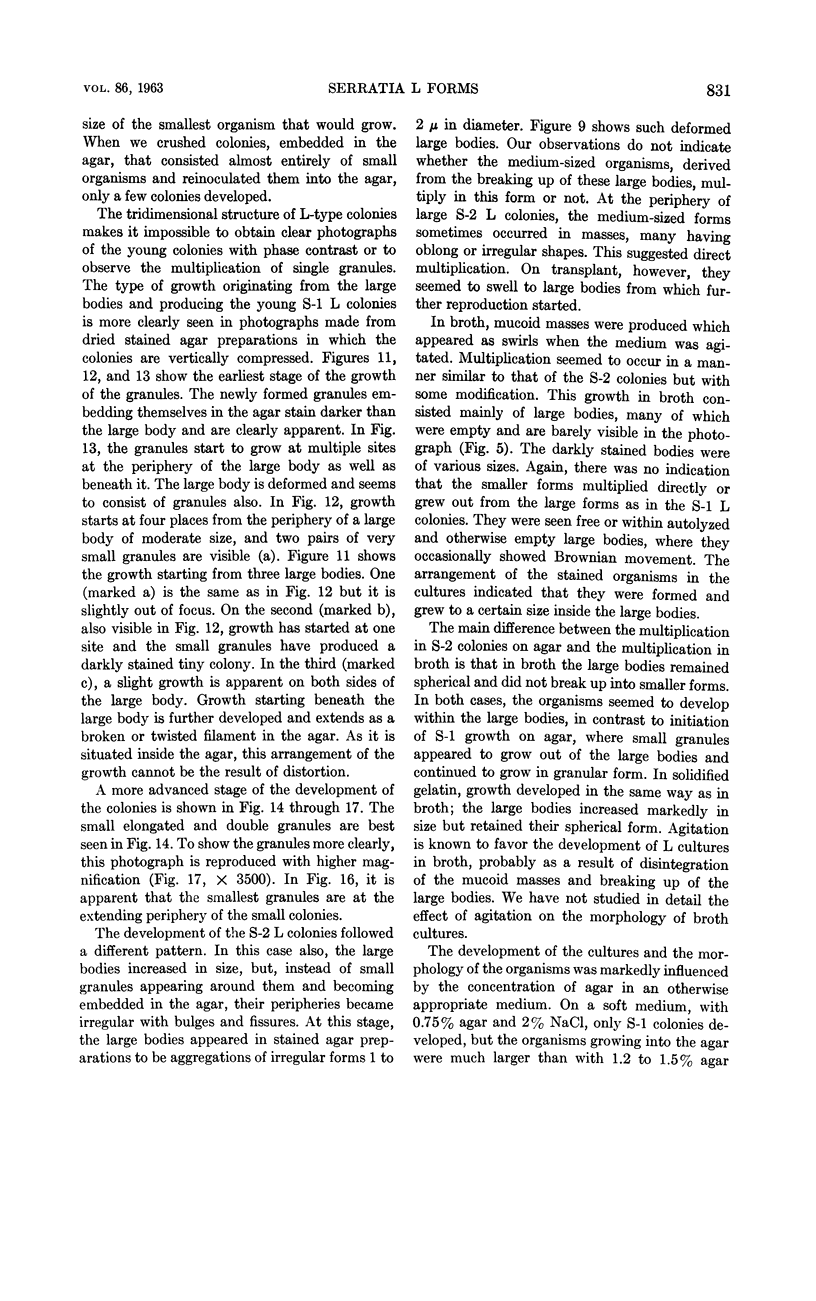
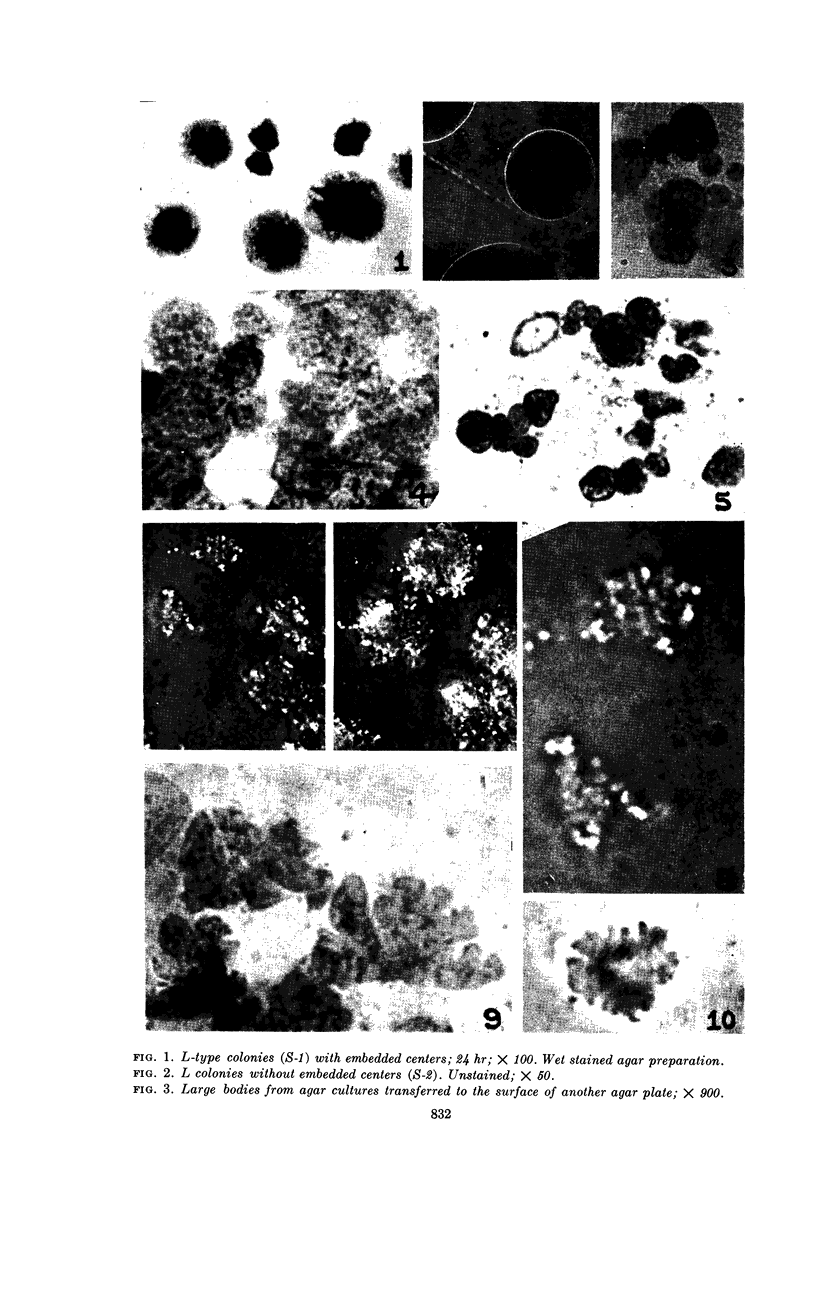
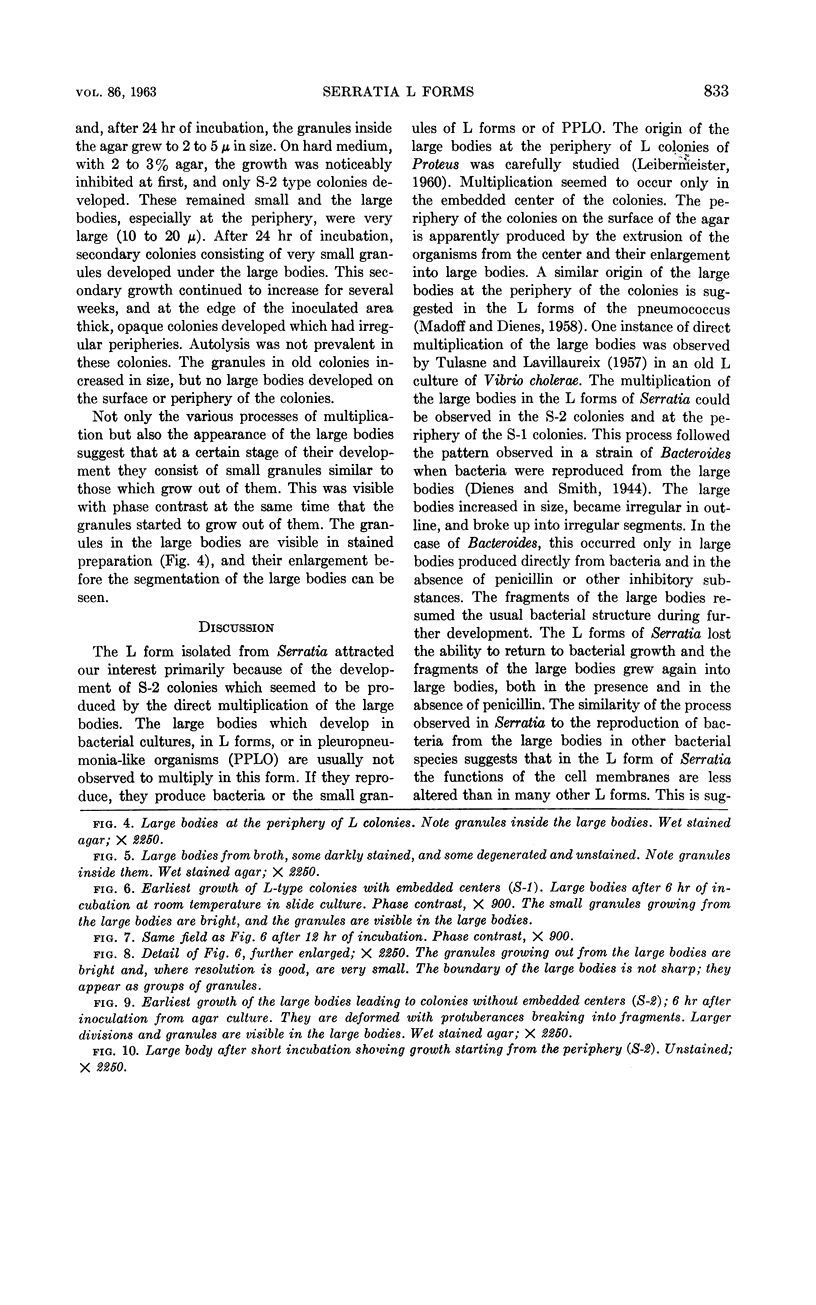
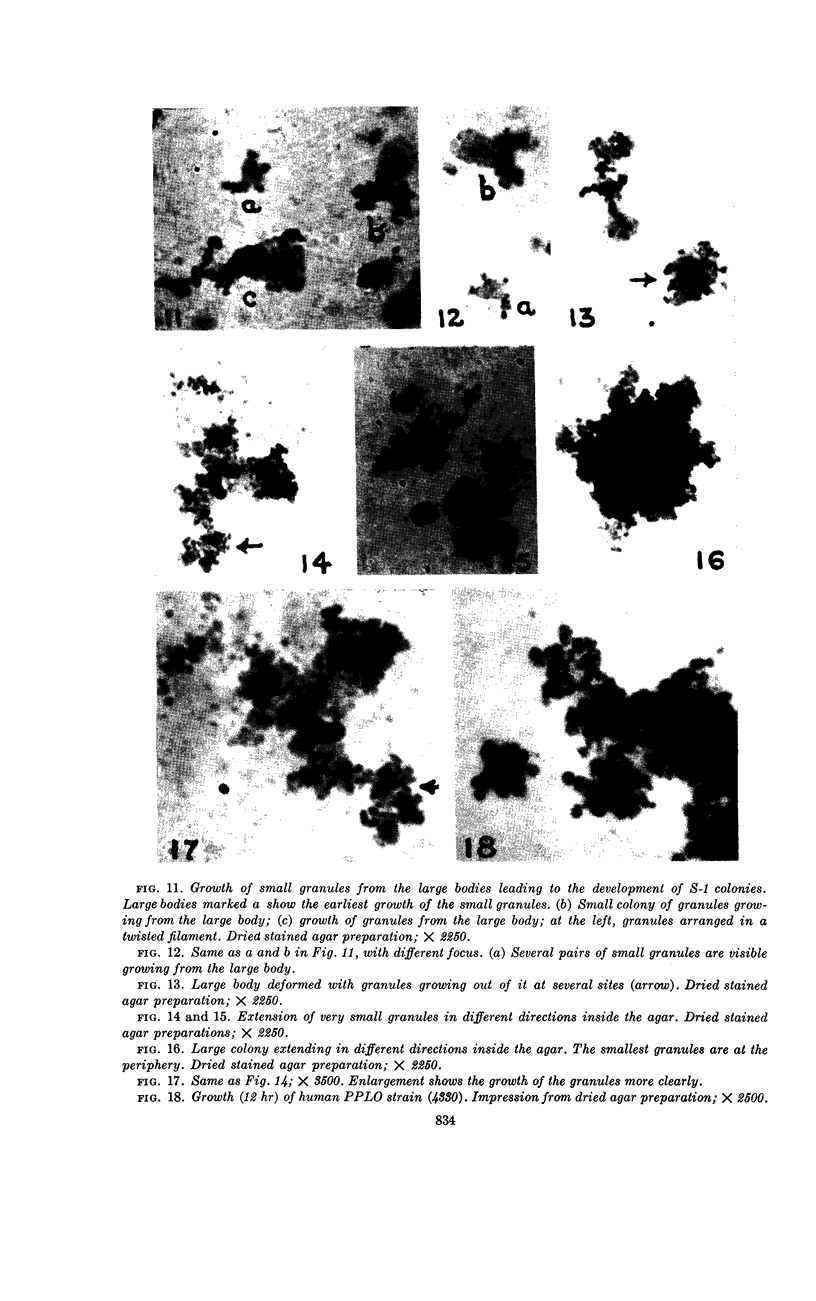

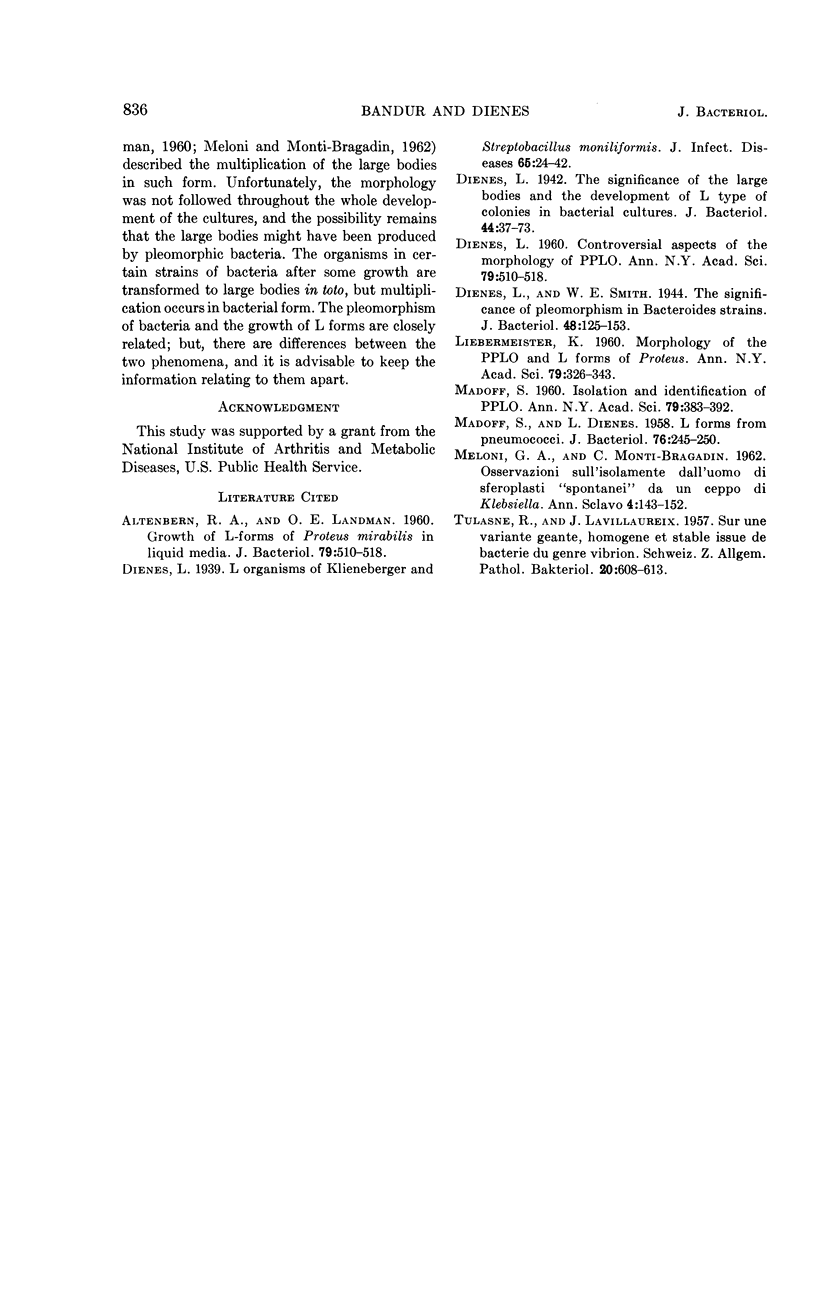
Images in this article
Selected References
These references are in PubMed. This may not be the complete list of references from this article.
- ALTENBERN R. A., LANDMAN O. E. Growth of L-forms of Proteus mirabilis in liquid media. J Bacteriol. 1960 Apr;79:510–518. doi: 10.1128/jb.79.4.510-518.1960. [DOI] [PMC free article] [PubMed] [Google Scholar]
- Dienes L., Smith W. E. The Significance of Pleomorphism in Bacteroides Strains. J Bacteriol. 1944 Aug;48(2):125–153. doi: 10.1128/jb.48.2.125-153.1944. [DOI] [PMC free article] [PubMed] [Google Scholar]
- Dienes L. The Significance of the Large Bodies and the Development of L Type of Colonies in Bacterial Cultures. J Bacteriol. 1942 Jul;44(1):37–73. doi: 10.1128/jb.44.1.37-73.1942. [DOI] [PMC free article] [PubMed] [Google Scholar]
- LIEBERMEISTER K. Morphology of the PPLO and L forms of Proteus. Ann N Y Acad Sci. 1960 Jan 15;79:326–343. doi: 10.1111/j.1749-6632.1960.tb42694.x. [DOI] [PubMed] [Google Scholar]
- MADOFF S., DIENES L. L forms from pneumococci. J Bacteriol. 1958 Sep;76(3):245–250. doi: 10.1128/jb.76.3.245-250.1958. [DOI] [PMC free article] [PubMed] [Google Scholar]
- MADOFF S. Isolation and identification of PPLO. Ann N Y Acad Sci. 1960 Jan 15;79:383–392. doi: 10.1111/j.1749-6632.1960.tb42702.x. [DOI] [PubMed] [Google Scholar]
- TULASNE R., LAVILLAUREIX J. Sur une variante microbienne géante, homogéne et stable issue de bactéries du genre vibrion. Schweiz Z Pathol Bakteriol. 1957;20(5):608–613. [PubMed] [Google Scholar]



